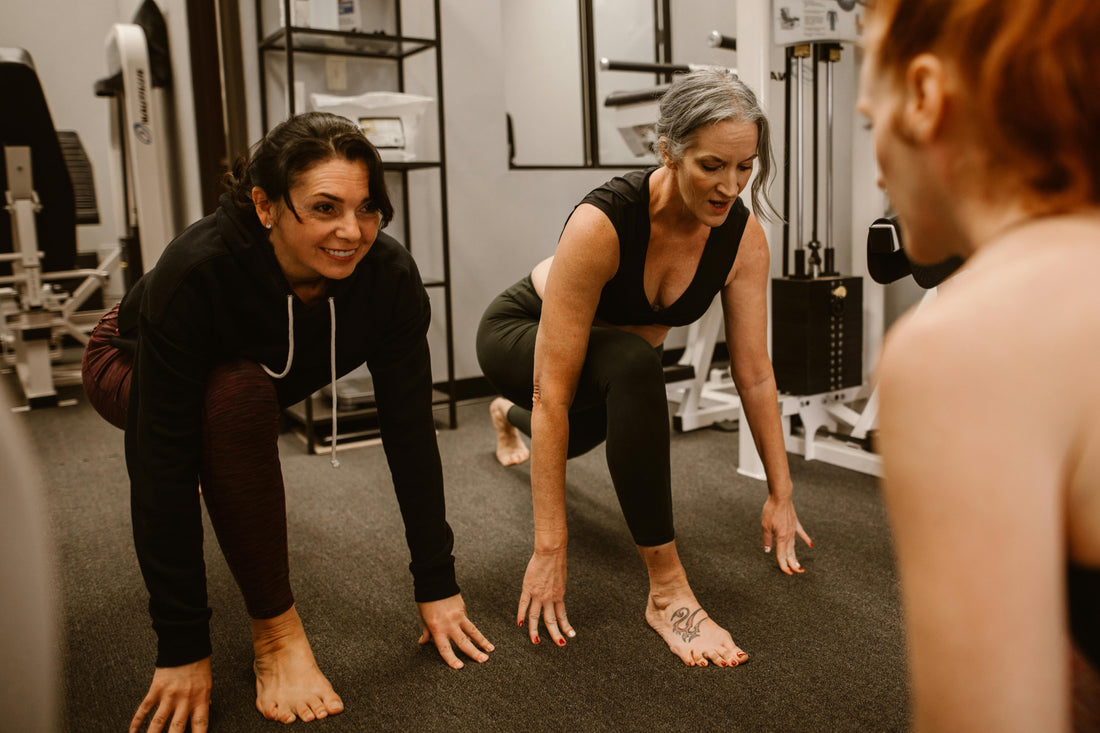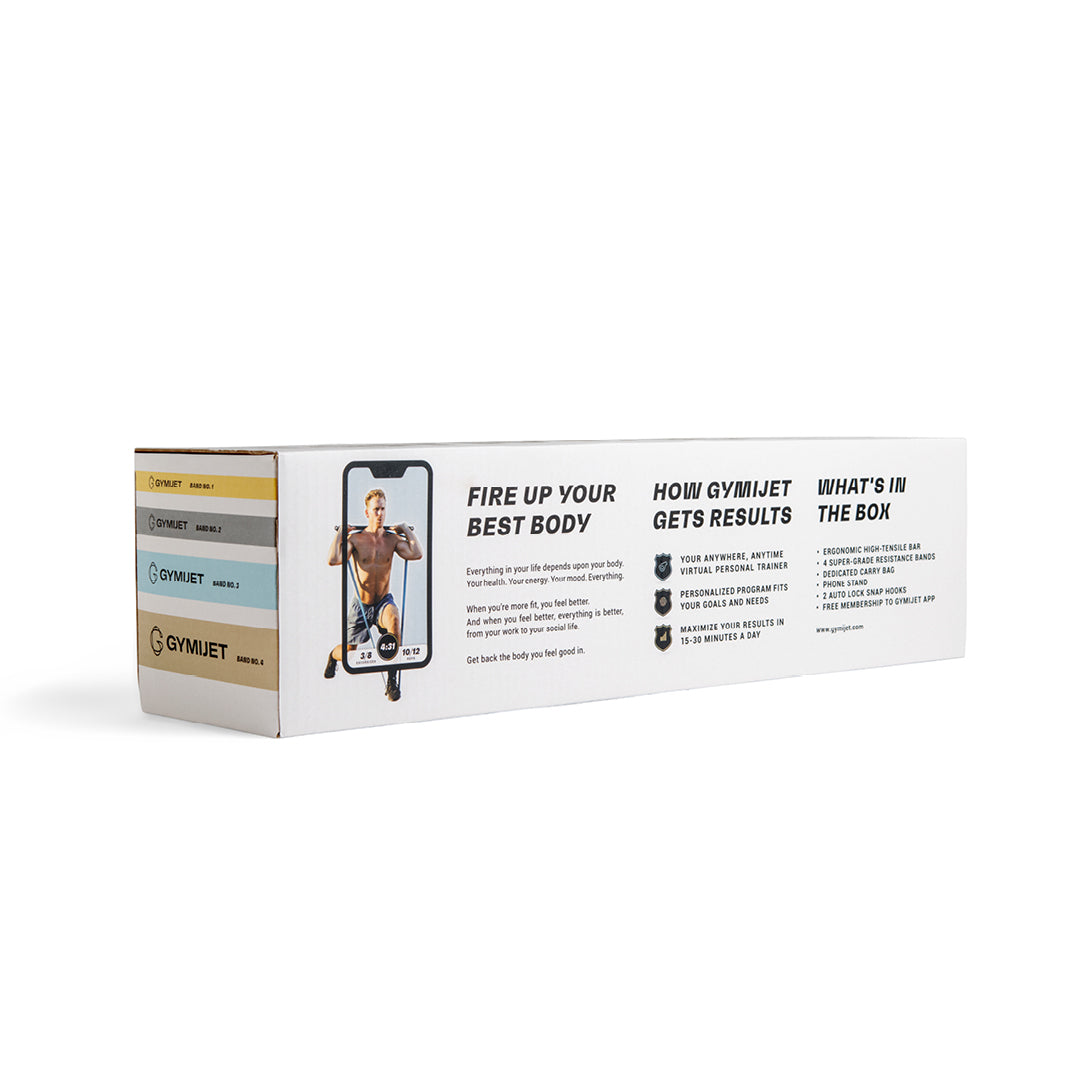
Postpartum Strength Training: Safe Core Recovery Workouts
Share
The journey back to strength after childbirth is both deeply personal and universally challenging. Your body has accomplished something extraordinary, but now you're faced with a core that feels foreign, a pelvic floor that may not cooperate, and an overwhelming desire to feel strong and confident again. The path forward isn't about "bouncing back" to your pre-pregnancy body, but building something better: a foundation of strength that honors what your body has been through while preparing it for everything that lies ahead.
Traditional postpartum fitness advice often falls short, offering generic timelines and one-size-fits-all solutions that ignore the complex realities of core recovery. But recent medical breakthroughs have revolutionized how we approach postpartum strength training, with evidence-based protocols that prioritize healing while building genuine functional strength. The key isn't rushing back to intense workouts, but understanding how to work with your recovering body, not against it.
The Challenge: Why Standard Workouts Fail New Mothers
Diastasis Recti and Core Dysfunction
Up to 60% of postpartum women experience diastasis recti—the separation of abdominal muscles that creates that persistent "pooch" and contributes to back pain, poor posture, and reduced core stability. Traditional ab exercises often exacerbate this condition, widening the gap rather than healing it. Many mothers unknowingly perform exercises that place excessive pressure on weakened connective tissue, leading to hernias, chronic pain, and long-term dysfunction.
Pelvic Floor Complications
Research shows that 73.6% of women still experience pelvic floor dysfunction one year postpartum, with symptoms including urinary incontinence, pelvic organ prolapse, and pelvic pain. High-impact exercises can increase these risks nearly fivefold, yet many fitness programs ignore this critical component of recovery. The pelvic floor doesn't just "bounce back"—it requires specific rehabilitation to function properly.
Breathing Pattern Dysfunction
Pregnancy and delivery dramatically alter breathing mechanics, rib cage position, and diaphragm function. Without addressing these foundational changes, any strength training program becomes built on unstable ground. Many new mothers develop shallow, chest-based breathing patterns that prevent proper core activation and increase neck and shoulder tension.
Postural Adaptations and Pain
Months of carrying a growing baby, followed by hours of feeding, carrying, and caring for a newborn, create significant postural adaptations. Forward head posture, rounded shoulders, and hip flexor tightness become chronic patterns that traditional workouts often reinforce rather than correct. These imbalances contribute to persistent pain and movement dysfunction.
Sleep Deprivation and Hormonal Changes
Chronic sleep disruption affects tissue healing, hormone regulation, and pain perception. Add ongoing hormonal fluctuations, especially if breastfeeding, and the body's ability to adapt to exercise stress is significantly compromised. Programs that don't account for these physiological realities set mothers up for injury and frustration.
Practical Solutions: Evidence-Based Core Recovery Strategies
Phase 1: Foundation Building (0-6 Weeks)
Begin with breath work and gentle mobility, even before receiving medical clearance. Focus on diaphragmatic breathing exercises that re-establish the connection between your diaphragm and pelvic floor. Practice gentle pelvic tilts, seated posture awareness, and walking as tolerated. This phase is about re-awakening dormant neural pathways, not building strength.
Safe Early Exercises:
- 360-degree breathing with gentle pelvic floor engagement
- Supported shoulder blade squeezes for posture correction
- Gentle neck stretches and rotation
- Ankle pumps and calf raises for circulation
- Modified cat-cow stretches for spinal mobility
Phase 2: Activation and Stability (6-12 Weeks)
After medical clearance, focus on core activation without excessive pressure. Begin with modified planks against a wall, progressing to incline positions as strength improves. Introduce resistance band exercises that challenge stability without straining healing tissues. Emphasis remains on quality over quantity.
Progressive Core Sequence:
- Wall sit with gentle core engagement
- Modified side plank holds (knees down)
- Dead bug exercises with controlled breathing
- Glute bridges with pelvic floor coordination
- Resistance band rows for posture strengthening
Phase 3: Functional Strength (12+ Weeks)
Gradually introduce compound movements that mirror daily activities. Squats while holding your baby, step-ups using stairs, and carrying patterns that improve real-world strength. Progress resistance based on form quality, not arbitrary timelines. Focus on exercises that address the movement patterns you use most as a mother.
Daily Function Training:
- Squat-to-stand patterns for picking up children
- Single-leg stance for balance and stability
- Rotational movements for reaching and lifting
- Overhead pressing patterns for placing items on shelves
- Hip hinge movements for safe lifting mechanics
How Gymijet Solves This Problem
Graduated Resistance for Healing Tissues
The Gymijet portable home gym kit provides the perfect solution for postpartum strength training with its variable resistance system. Unlike jarring weights that can stress healing tissues, resistance bands provide accommodating resistance that matches your strength throughout each movement. As your core function improves, the bands automatically provide appropriate challenge without risk of overloading vulnerable areas.
AI-Guided Workouts
The Gymijet fitness app uses AI technology to monitor your exercise technique and alert you when your form needs attention, helping you stay safe and get better results from every workout.
This smart monitoring is especially valuable during postpartum recovery, when your body is adapting and it's easy to develop compensatory movement patterns that could lead to injury—particularly important for conditions like diastasis recti where maintaining proper form is crucial for safe recovery.
Home-Based Convenience for New Mothers
Weighing only 6 pounds and storing in a compact bag, Gymijet eliminates the barriers that prevent new mothers from exercising consistently. No need to coordinate childcare, drive to a gym, or work around facility hours. Set up anywhere in your home, exercise while your baby naps or plays nearby, and store everything away in seconds.
Progressive Loading Without Equipment Changes
As your strength returns, Gymijet grows with you. The same bands that provide gentle resistance for early activation exercises can challenge you through advanced strength training movements. This eliminates the need to constantly acquire new equipment as you progress, making it both economical and practical for long-term use.
Expert Tips: Professional Insights for Safe Recovery
- Start Earlier Than Traditional Guidelines Suggest - Leading physical therapists now recommend beginning gentle exercises within days of uncomplicated deliveries rather than waiting 6 weeks for everything. The 2020 ACOG guidelines specifically state that "exercise routines may be resumed gradually after pregnancy as soon as medically safe."
- Focus on Linea Alba Tension, Not Just Closing the Gap - Research by diastasis recti specialists reveals that "the ability to generate tension and minimize distortion in the linea alba appears more significant for function as opposed to the inter-recti distance." This means effective exercises create tension in the connective tissue between abdominal muscles, not just narrow the visible gap.
- Use the 2025 Evidence-Based Progression Timeline - The groundbreaking 2025 Canadian Postpartum Guidelines, endorsed by ACSM, recommend that most women can safely return to pre-pregnancy activity levels by 13 weeks postpartum when following proper progression. This represents the most current evidence-based timeline available.
- Address Breathing Before Building Strength - Pelvic health specialists emphasize that "the core of the core is the diaphragm," and proper breathing patterns must be established before progressing to complex exercises. Research shows that breathing dysfunction affects up to 80% of postpartum women and underlies most core recovery issues.
- Seek Women's Health Clinical Specialists for Assessment - Board-certified specialist Dr. Tracy Spitznagle at Washington University emphasizes that "qualified women's health physical therapists should lead the research and treatment protocols" for postpartum conditions. Look for PTs with WCS (Women's Clinical Specialist) certification for optimal assessment and treatment.
FAQs
When can I safely start strength training after delivery?
The 2020 ACOG guidelines state that exercise can resume "as soon as medically safe," which may be within days for uncomplicated vaginal deliveries. However, strength training should begin with gentle activation exercises and progress gradually. C-section deliveries typically require 6-8 weeks before progressing to strength training, but gentle mobility can start earlier with medical clearance.
Will exercise make my diastasis recti worse?
Properly performed exercises actually help heal diastasis recti by creating tension in the linea alba and improving core function. However, traditional crunches, sit-ups, and planks can worsen the separation if performed too early or with poor form. Focus on exercises that create length and tension rather than forceful flexion movements.
How do I know if I have pelvic floor dysfunction?
Common signs include urinary leakage during coughing, sneezing, or exercise; urgency or frequency issues; pelvic pressure or heaviness; pain during intercourse; or lower back pain. Since 73.6% of women experience some pelvic floor dysfunction postpartum, assessment by a pelvic floor physical therapist is recommended for all new mothers.
Can resistance bands really replace weights for strength training?
Research shows that resistance band training produces strength gains comparable to free weights while offering several advantages for postpartum recovery. Bands provide accommodating resistance that matches your strength curve, reduce joint stress, and allow for safer progression. The variable resistance actually enhances muscle activation in many exercises.
What's the difference between regular trainers and postpartum specialists?
Postpartum exercise specialists understand the unique physiological changes of pregnancy and recovery, including diastasis recti, pelvic floor dysfunction, postural adaptations, and hormonal influences. They can assess for contraindications, modify exercises appropriately, and provide progression timelines that respect healing processes rather than arbitrary fitness goals.
Building Something Better: Your Path Forward
Postpartum core recovery is building something better than where you started. With evidence-based approaches, proper progression, and the right tools, you can develop strength, confidence, and function that serve you well beyond motherhood. The key is working with qualified specialists, respecting your body's healing timeline, and choosing exercise methods that support rather than compromise your recovery.
Your core recovery journey is unique, but you don't have to navigate it alone. With smart programming, graduated resistance, and expert guidance, you can build the strong, functional foundation you deserve.
Start Your AI-Powered Recovery Journey Now and experience how technology and expertise combine to support your postpartum strength goals safely and effectively.














